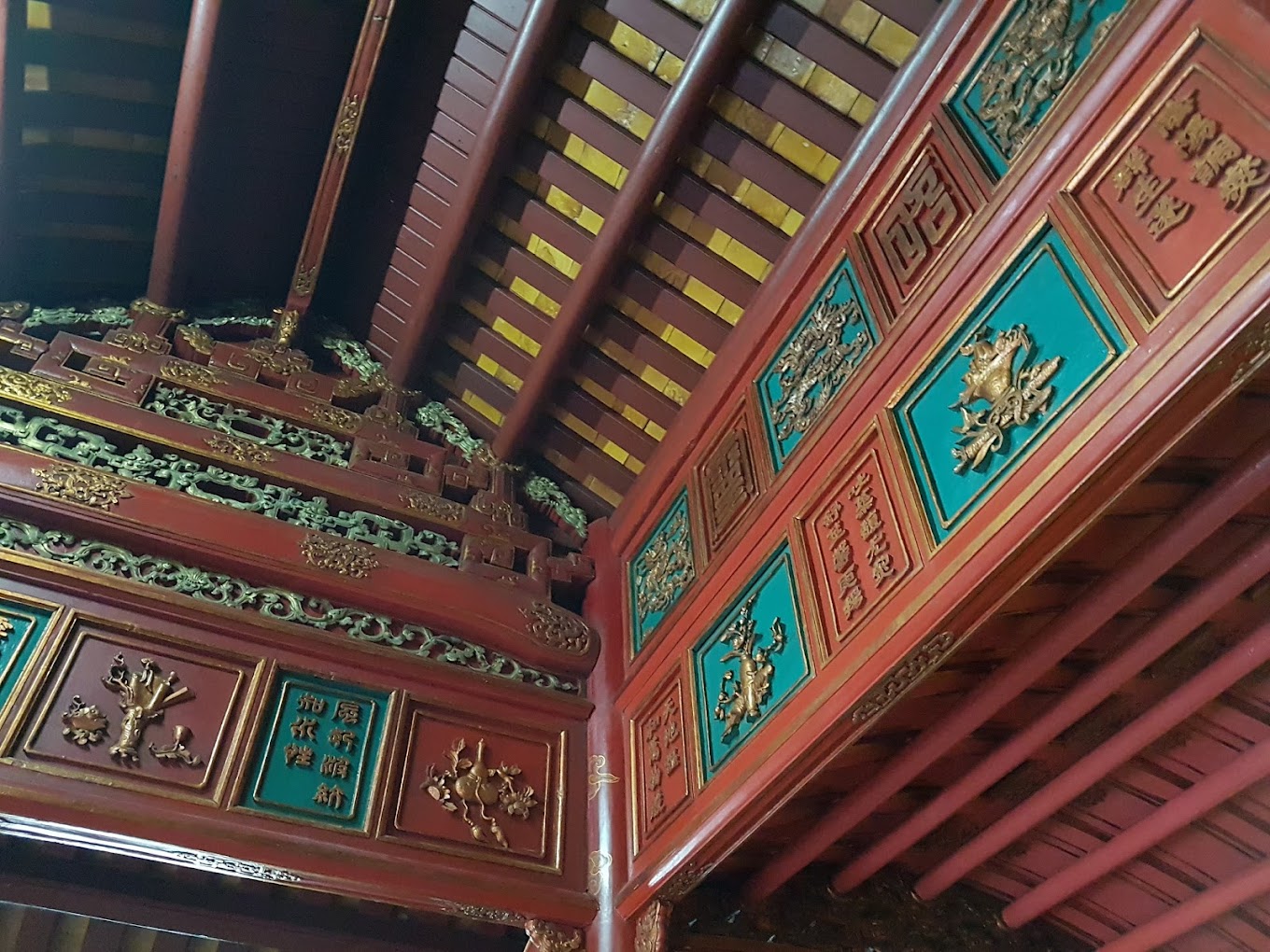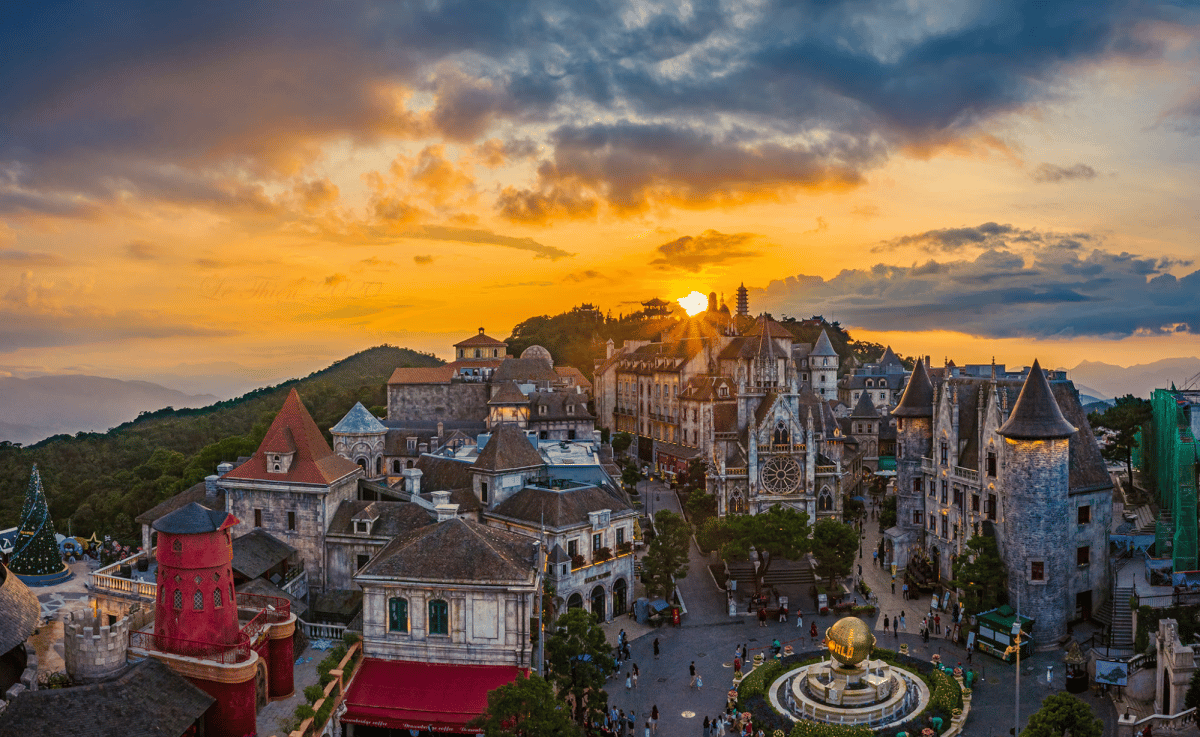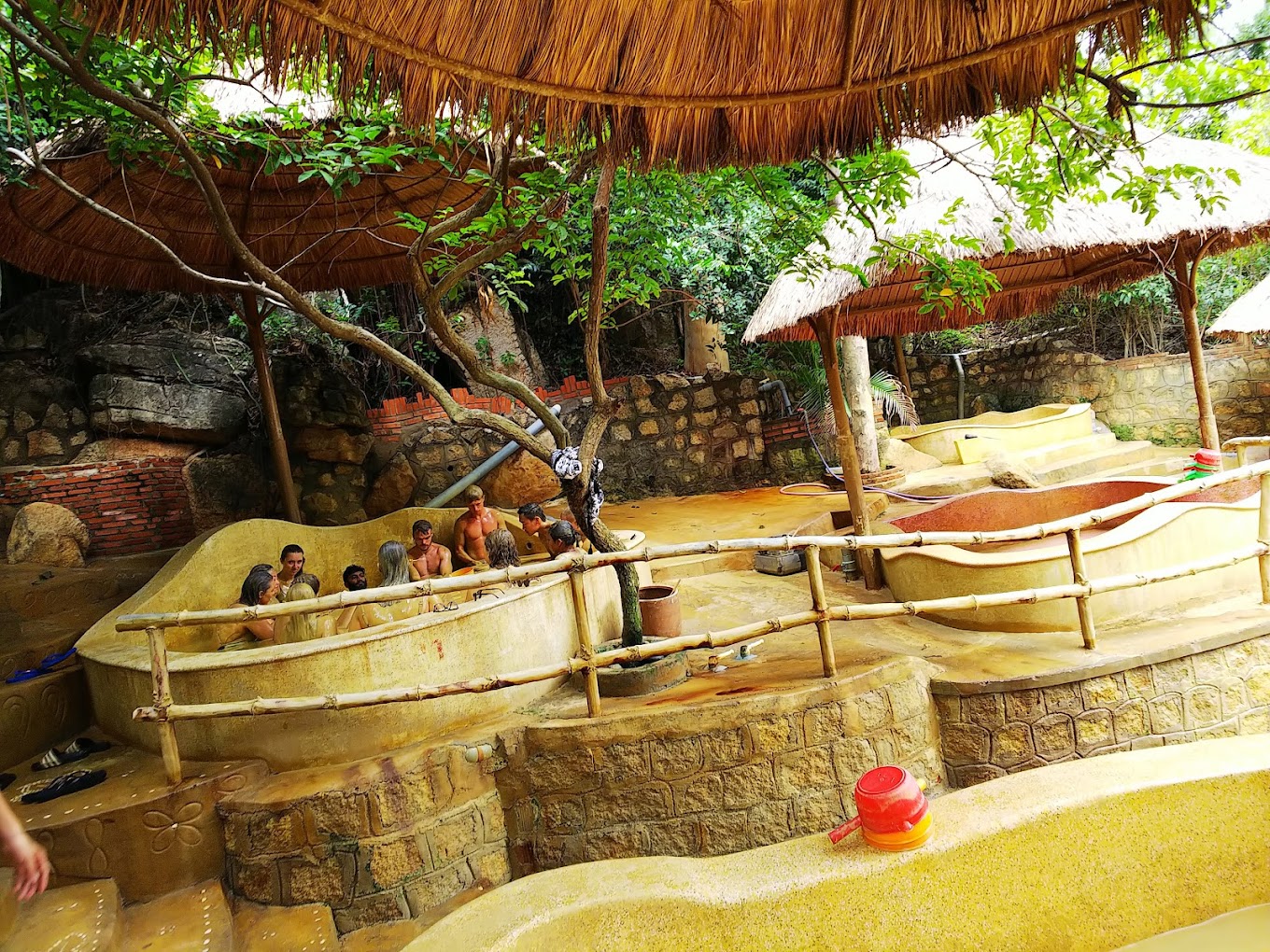If Tu Duc Tomb is compared to a picturesque landscape painting, and Khai Dinh Tomb is known for its unique combination of Eastern and Western architecture, then Minh Mang Tomb in Hue is beautiful in a traditional and ancient way, with a strong Confucian character. It is one of the seven royal tombs built during the Nguyen dynasty, both a historical relic and an attractive destination for tourists visiting the ancient capital city. Visiting this place gives tourists a chance to learn more about the art of ancient tomb architecture as well as important historical periods of the country.
Table of Contents
Where is Minh Mang Tomb located?

Minh Mang Tomb is located on Cam Khe Mountain, in Huong Tho Commune, Huong Tra Town, Thua Thien Hue Province. According to statistics, there are up to 40 different large and small constructions on this hill. Among them, Minh Mang Tomb is located in a convenient location, with cool mountains, rivers, and lakes. Although it is a solemn architectural work, it quickly became a popular destination for tourists near and far to visit and explore.
- Address of Minh Mang Tomb: National Highway 49 – Huong Tho – Huong Tra – Thua Thien Hue
How far is Minh Mang Tomb from Hue City? How to get there?
Minh Mang Tomb is about 12km south of Hue City, at the intersection of Bang Lang. It is not difficult to get here. Tourists can travel by various means of transportation. From the city center, you can take a dragon boat along the Huong River, where the Ta Trach and Huu Trach Rivers converge.
Or if you travel by road (car, motorbike), you can start from Huyen Tran Cong Chua Street, go straight until you reach the turn to Tuấn Bridge. Then, go out to National Highway 49 and continue straight to reach the destination. In case you are not confident and skilled in navigation, you can use Google Maps.
Renting a car with a driver in Hue will make it easier for you to travel, as our driver is knowledgeable and can speak English, which can be very helpful for you during your trip. Choosing to rent a car with a driver is currently the best option with the best price
The history of the formation of Minh Mang’s tomb in Hue
Purpose of building Minh Mang’s tomb.
Minh Mang was the second son of King Gia Long, known for his intelligence, wisdom, strong will, and strict upbringing. After his father’s death in 1820, he was crowned as king and took charge of the country’s affairs. During his reign, he made many important contributions to the country’s reforms, leading to the strong development of Dai Nam.

At that time, King Minh Mang wanted to build a tomb for himself with the initial purpose of creating a place to rest and relax after the stresses of ruling, and later as a final resting place.
The process of building Minh Mang’s tomb in Hue.
To create the grand and beautiful Minh Mang’s tomb complex as it is today, a significant amount of time was spent choosing the location for construction. The court officials spent 14 years searching and researching before deciding on Cam Khe Mountain due to its combination of water, mountain, and greenery. The king then renamed the mountain to Hieu Son and named the tomb Hieu Lang.

Because it was a meaningful project in his life, Minh Mang paid attention to every detail of the construction process. The architectural designs and reports were carefully reviewed and approved by the king. Construction began in 1840, and the king ordered all court officials to dig the lake to meet the schedule. However, after one disappointment, he demoted the overseeing officials. Unfortunately, before construction could continue, King Minh Mang became ill and passed away.
One month later, King Thieu Tri ascended the throne and continued the construction of La Citadel. In 1841, Minh Mang’s remains were buried in Buu Thanh, and it was not until 1843 that the tomb was officially completed.
Minh Mang’s tomb embodies a philosophy of life that few people know about.
Also known as Hieu Lang, Minh Mang’s tomb elicits unique sensations in almost all visitors. Here, one can appreciate the harmonious beauty, tranquility, and hidden vitality. Visiting Minh Mang’s tomb is not a mournful experience but a purification and rebirth between life and death.

One can sense that King Minh Mang was serene and wise in the face of death. Influenced by the Lao-Tzu and Confucian philosophies, he believed that “only humans are conscious of themselves and the universe, therefore, able to choose their relationship with nature. Sometimes it is harmony with nature, other times it is conquering, controlling, or exploiting nature.”
In his view, death is not the end but a transition to a new world filled with happiness and beauty. Thus, he sought out good land to create a paradise on earth, a poetic and musical destination where death is absent.
Minh Mang’s tomb embodies the harmony between humans and nature, creating a gentle soul. Visitors are impressed by the tomb’s beauty, which paints a beautiful landscape with a good philosophy.
Minh Mang Tomb in Hue preserves a treasure trove of Vietnamese literature.
The poetry of Minh Mang is intimately connected with the lives and aspirations of ordinary people, making the tomb of King Minh Mang a museum of enduring poetry that many seek out. The poetry of Minh Mang is inscribed on the Thai Hoa Palace, the Nine Dynastic Urns, and most notably on the Minh Mang Tomb.

The total number of poems amounts to 120 quatrains, which are inscribed into 500 separate panels. All of the poems are divided and inscribed into separate panels and strips of three lines each on four main structures: Bi Dinh, Hien Duc Gate, Sung An Palace, and others.
All of the poems were written by King Minh Mang himself, but he did not consider himself a poet: “The poetry I write is only for leisure and entertainment.” If you have the opportunity to visit here, be sure to explore the wonderful poetry inscribed on the tomb.
Places to explore when visiting Minh Mang’s Tomb.
Minh Mang’s Tomb, located in Hue, is considered one of the most majestic mausoleums of the Nguyen dynasty’s architecture. The entire tomb covers an area of 1,750 square meters, arranged symmetrically to create an extremely attractive architectural complex. Here are the top 5 places to explore when visiting Minh Mang’s Tomb.
Dai Hong Mon – the entrance to Minh Mang’s Tomb.
This is the main gate, the door that opens the way into the tomb, consisting of 3 walkways with 24 finely decorated roofs. According to Hue tourism experience, Dai Hong Mon only opens once to bring the king’s coffin in. If you want to enter inside, you have to pass through two paths on either side, Tả Hồng Môn and Hữu Hồng Môn.

This gate is built in the architectural style of a state gate with a curved roof like a turtle shell, creating an image like an expanding lotus. Outside is covered with red paint – a color symbolizing the life and survival of the Nguyen dynasty’s royal court.
Bai Dinh – the courtyard area in Minh Mang’s Tomb.
After passing through Dai Hong Mon, you will come to Bai Dinh. From the moment you set foot in here, you will be impressed with the spacious courtyard with two rows of statues of officials, elephants, and horses. This area is paved with Bat Trang bricks, the main highlight being the Thanh Duc Than Cong stele written by King Thieu Tri to commemorate the merits of his father when he was alive. Although time has passed, this artifact still seems almost intact.

The Temple area of Minh Mang’s Tomb.
This is the place to worship the king, including Hieu Duc Mon and Sung An Palace located in the center of the king’s worship area, queen, and Hoang Trach Mon. When you step in, you will immediately feel the sacred and ancient space, completely different from the surrounding areas. However, you will also enjoy the beauty of nature, such as the green of trees, the vast lake, and small lotus towers.
Minh Lau Tower in Minh Mang’s Tomb.
Next is the Minh Lau Tower – a 2-story, 8-roof square building located on the Tam Dai Son hill, behind the Tho Chu flower garden. In the Minh Mang’s Tomb complex, this is the space for the king to rest, relax, and enjoy life. Perhaps that is why it is decorated so beautifully. In the bright sunshine, the rows of green trees are lush, and at night, you can easily admire the moon and feel the breeze. Note to visitors: do not litter or deface the artifacts!

The Thong Minh Chinh Truc Bridge inside the mausoleum.
If you are visiting the mausoleum of Minh Mang for the first time, don’t miss the Thong Minh Chinh Truc Bridge which spans over Tan Nguyet Lake and leads you to the Minh Lau Pavilion. The beauty of the bridge, with its ancient architectural style and the tranquil lake, creates a peaceful and harmonious atmosphere in tune with nature.
The latest ticket prices and visiting hours for Minh Mang Tomb in 2022.
Currently, the ticket price for visiting Minh Mang Tomb in Hue is 100,000 VND/adult, 50,000 VND/seniors and children, and 20,000 VND/ride for children. The tomb is open to visitors every day of the week, from Monday to Sunday (from 7 am to 5:30 pm). Tourists can plan their visit to this revered king’s tomb at their convenience.
You can check the ticket prices for Minh Mang Tomb and all other tourist attractions in Hue in this article: Ticket price to visit Hue 2023 Updated
Visiting Minh Mang Tomb in Hue Experience
When is the best time to visit Minh Mang Tomb in Hue?
The most pleasant weather in Hue is around January and February. This is the beginning of spring, with cool weather, not too sunny and no rain, making it convenient for travel and visiting historical sites. Absolutely avoid going during the rainy season, as the rainy season in Hue usually lasts for a long time, and can even be quite cold!

How long does it take to explore the entire Minh Mang Tomb complex?
The architectural complex of the tomb is quite extensive. If you want to explore all the nooks and crannies inside and around the tombs and historical relics, you will need about 3 to 4 hours.
You can refer to our Hue City tour from Da Nang. It is a day trip with a flexible itinerary that you can customize according to your preferences.
Some notes to know when visiting the tomb of Minh Mang in Hue:
- The tomb of Minh Mang in Hue is a solemn place, where the offerings of incense and fruit are made to the king and queen, so please dress modestly and avoid revealing clothing that may cause offense.
- This is the resting place of the king, so visitors should maintain order and avoid being too loud or boisterous.
- Visitors must follow the regulations of the monument management board, respect the significance of the site, and not touch artifacts or climb on statues.
The tomb of Minh Mang is a significant historical site that reflects the society of a bygone era. If you have the opportunity to visit Hue, do not miss this destination to witness its grandeur and learn about its deep historical values.


